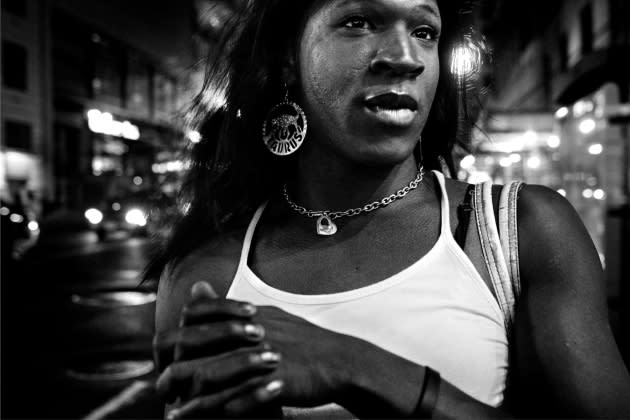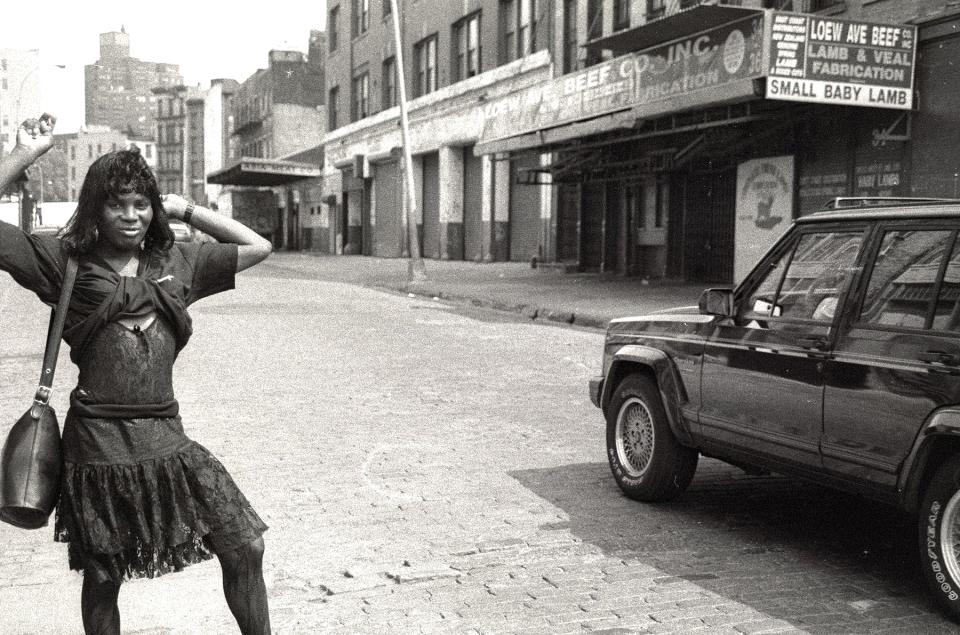‘The Stroll’: The Black Trans Sex Workers Who Gave New York City Life

Egyptt, Lady P, Ceyenne, Cashmere: they’re all on intimate terms with The Stroll, a strip of 14th Street in the Meatpacking District once popular with Black trans sex workers in pre-yuppified Manhattan. It was a dangerous life; the streetwalkers often didn’t know if they’d be beaten up by the johns or the cops. But at the end of the day they knew they had each other, and it’s this sense of community and camaraderie that stands out in The Stroll, the new HBO documentary from stroller-turned-filmmaker Kristen Lovell.
Directed by Lovell and Zackary Drucker, the trans filmmaker who also directed the recent limited series Queenmaker, The Stroll is one of those docs that plants a specific subject as a seed that grows to explore various issues. The film is about gentrification, and how the transformation of a once-grimy neighborhood into a high-end retail and residential hub affected those who used to live and work there. (You won’t find a lot of meatpacking in the Meatpacking District these days). It’s about human rights, particularly trans rights, a subject sadly relevant at a time of resurgent hate crimes and anti-trans legislation. It’s about tensions within the LGBTQ+ community. At one point we see archive footage of the late trans activist Sylvia Rivera lamenting what she sees as a sad state of affairs: “Gay America does not care about its own.” As Black trans sex workers, the primary subjects of The Stroll — many of whom entered the world’s oldest profession because nobody else would hire them — received scorn from every direction imaginable.
More from Rolling Stone
How to Watch the Complete 'Sex and the City' Series Online Free
'And Just Like That ...' Season 2 Puts the Sex Back in 'Sex and the City'
They Took Their Daughter to the Hospital and Were Accused of Abuse
That means The Stroll is also about survival. It’s a reunion of sorts, among those who harbor no delusions that what they did to make ends meet wasn’t dangerous, or even dehumanizing. “I can’t believe the things we had to do,” exclaims Cashmere, bursting into tears against the backdrop of the current, cleaned-up Stroll. “I hate this place.”
“This place,” like much of pre-Giuliani, pre-Bloomberg New York, doesn’t really exist anymore, a fact not lost on Lovell or her film.
One of its expert on-camera sources is Jeremiah Moss, author of Vanishing New York, an impassioned defense of the creativity and authenticity that thrived in the city before it became a rich person’s playground. But Lovell also makes room for a neighborhood activist who remains vocal about why he feels the Meatpacking District needed to clean up and push the sex trade out. As a denizen of the old District, and the old city, Lovell feels an emotional attachment to what once was. However, as a clear-eyed participant observer, she knows The Stroll wasn’t exactly heaven on earth. This sense of fullness and balance is one of the film’s strengths. Lovell was there, and her voice carries an authority that no tourist could match.

She has also turned herself into a very capable filmmaker. The Stroll is a personal piece of work; it even includes footage of Lovell from when she was an active stroller, shot, Lovell says in her doc, when she was high on cocaine. She is deeply invested in the subject. But she also marshals a range of filmmaking resources, including animation that conjures a sort of clip-art feel of the period, evocative images (from cinematographer Sara Kinney) of what The Stroll looks like now, and telling news footage from a time when officers of the nearby 6th Precinct talked openly of the “unnatural acts” taking place under their watch. Some strollers recall that their clients included cops; one recalls the time she performed fellatio on an officer, who then arrested her.
Today, you can stroll above The Stroll, along the idyllic High Line, a carefully manicured slice of urban Eden, to which one former stroller quips, “The only high line we had was a crack pipe on the pier next to the water.” The Stroll brings this world back to life; in its own way, the film stands with Midnight Cowboy and Taxi Driver as a stark portrait of the naked city as it used to be. Lovell may know better than to overly romanticize this time and place, but she also knows there was something vivid, real, and, most important for these purposes, cinematic about her old haunts. The Stroll is a vital work of recent urban history. Even if you wouldn’t want to have lived there, you won’t regret visiting.
Best of Rolling Stone

